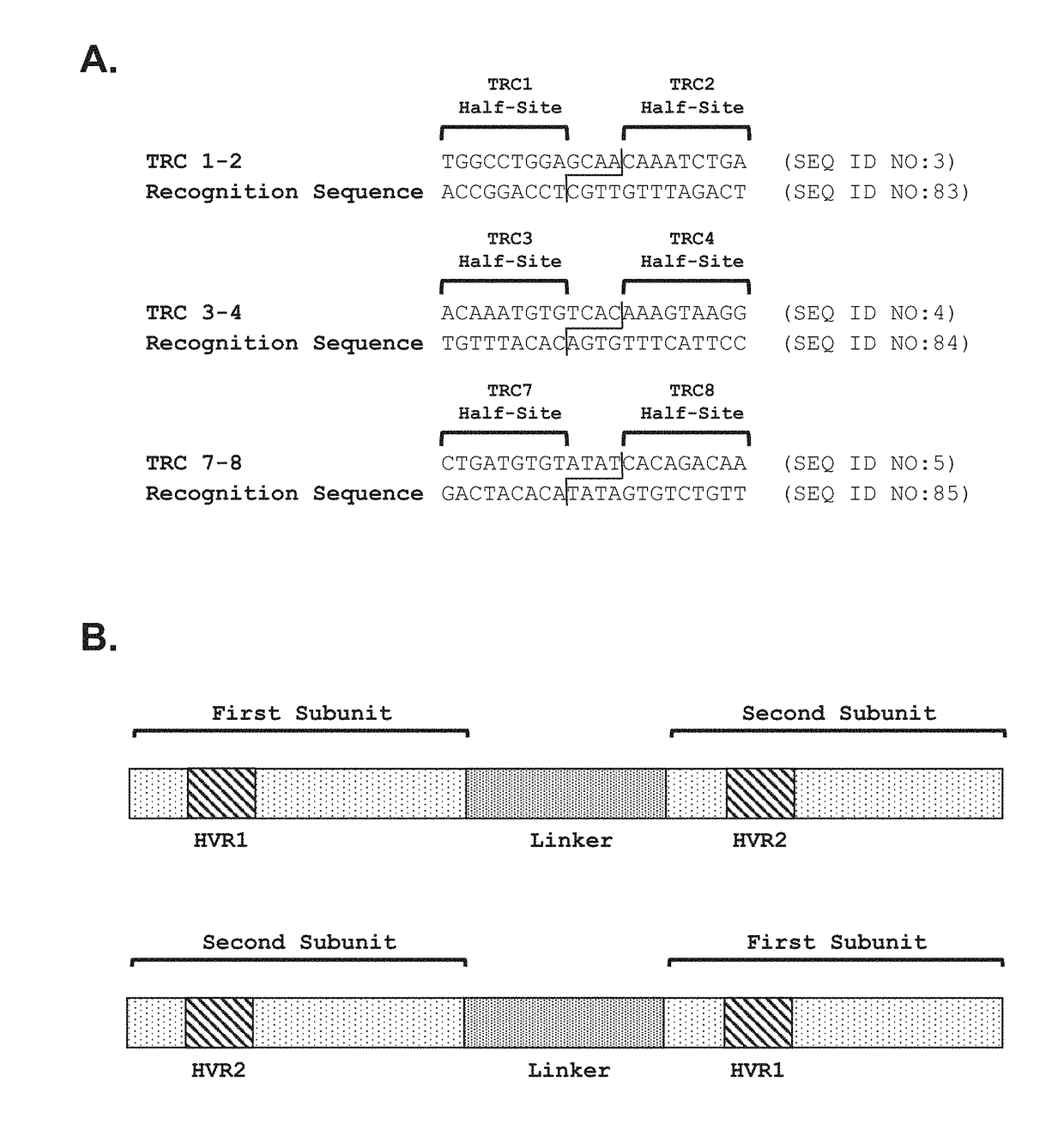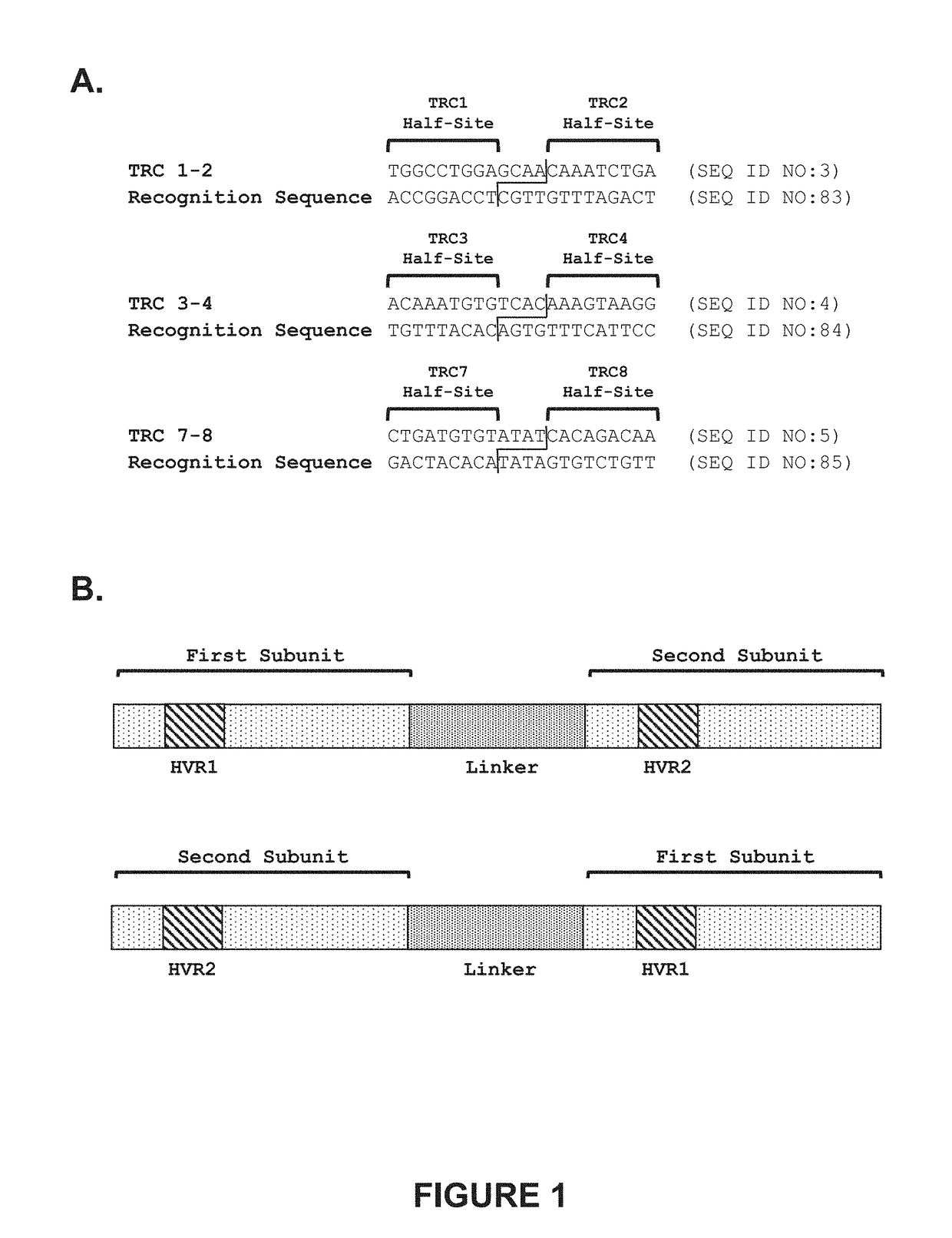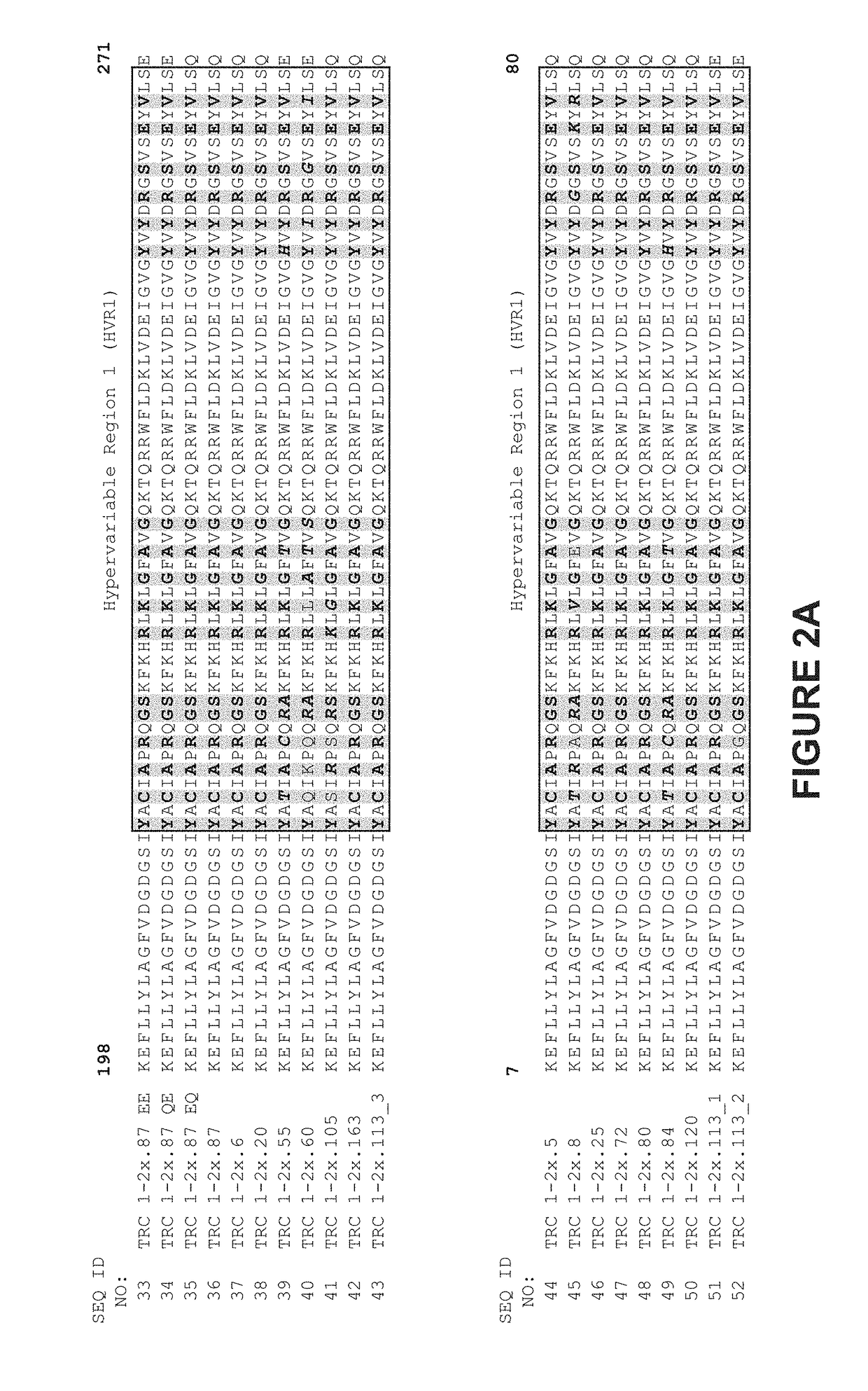Engineered meganucleases with recognition sequences found in the human t cell receptor alpha constant region gene
- Summary
- Abstract
- Description
- Claims
- Application Information
AI Technical Summary
Benefits of technology
Problems solved by technology
Method used
Image
Examples
example 1
Characterization of Meganucleases that Recognize and Cleave TRC Recognition Sequences
[0335]1. Meganucleases that Recognize and Cleave the TRC 1-2 Recognition Sequence
[0336]Recombinant meganucleases (SEQ ID NOs:8-27), collectively referred to herein as “TRC 1-2 meganucleases,” were engineered to recognize and cleave the TRC 1-2 recognition sequence (SEQ ID NO:3), which is present in the human T cell receptor alpha constant region. Each TRC 1-2 recombinant meganuclease comprises an N-terminal nuclease-localization signal derived from SV40, a first meganuclease subunit, a linker sequence, and a second meganuclease subunit. A first subunit in each TRC 1-2 meganuclease binds to the TRC1 recognition half-site of SEQ ID NO:3, while a second subunit binds to the TRC2 recognition half-site (see, FIG. 1A).
[0337]As illustrated in FIGS. 2 and 3, TRC1-binding subunits and TRC2-binding subunits each comprise a 56 base pair hypervariable region, referred to as HVR1 and HVR2, respectively. TRC1-bin...
example 2
Cleavage of TRC Recognition Sequences in T Cells and Suppression of Cell-Surface T Cell Receptor Expression
1. Cleavage of the TRC 1-2 Recognition Sequence in Jurkat Cells
[0350]This study demonstrated that TRC 1-2 meganucleases encompassed by the invention could cleave the TRC 1-2 recognition sequence in Jurkat cells (an immortalized human T lymphocyte cell line). 1e6 Jurkat cells were electroporated with 8e6 copies of a given TRC 1-2 meganuclease mRNA per cell using a BioRad Gene Pulser Xcell according to the manufacturer's instructions. At 72 hours post-transfection, genomic DNA (gDNA) was harvested from cells and a T7 endonuclease I (T7E) assay was performed to estimate genetic modification at the endogenous TRC 1-2 recognition sequence (FIG. 11). In the T7E assay, the TRC 1-2 locus is amplified by PCR using primers that flank the TRC 1-2 recognition sequence. If there are indels (random insertions or deletions) within the TRC 1-2 locus, the resulting PCR product will consist of a...
example 3
Recombinant AAV Vectors for Introducing Exogenous Nucleic Acids into Human T Cells
1. Recombinant AAV Vectors
[0356]In the present study, two recombinant AAV vectors (referred to as AAV405 and AAV406) were designed to introduce an exogenous nucleic acid sequence, comprising an EagI restriction site, into the genome of human T cells at the TRC 1-2 recognition sequence via homologous recombination. Each recombinant AAV vector was prepared using a triple-transfection protocol, wherein a cell line is transfected with a first plasmid encoding “helper” components (e.g., adenoviral) necessary to support replication, a second plasmid comprising the cap and rep genes, and a third plasmid comprising the viral inverted terminal repeats (ITRs) containing the intervening DNA sequence to be packaged into the virus (e.g., the exogenous nucleic acid sequence) (see, Cots D, Bosch A, Chillon M (2013) Curr. Gene Ther. 13(5): 370-81). FIG. 15 illustrates the general approach for using recombinant AAV vec...
PUM
| Property | Measurement | Unit |
|---|---|---|
| Fraction | aaaaa | aaaaa |
| Volume | aaaaa | aaaaa |
| Volume | aaaaa | aaaaa |
Abstract
Description
Claims
Application Information
 Login to View More
Login to View More - R&D
- Intellectual Property
- Life Sciences
- Materials
- Tech Scout
- Unparalleled Data Quality
- Higher Quality Content
- 60% Fewer Hallucinations
Browse by: Latest US Patents, China's latest patents, Technical Efficacy Thesaurus, Application Domain, Technology Topic, Popular Technical Reports.
© 2025 PatSnap. All rights reserved.Legal|Privacy policy|Modern Slavery Act Transparency Statement|Sitemap|About US| Contact US: help@patsnap.com



